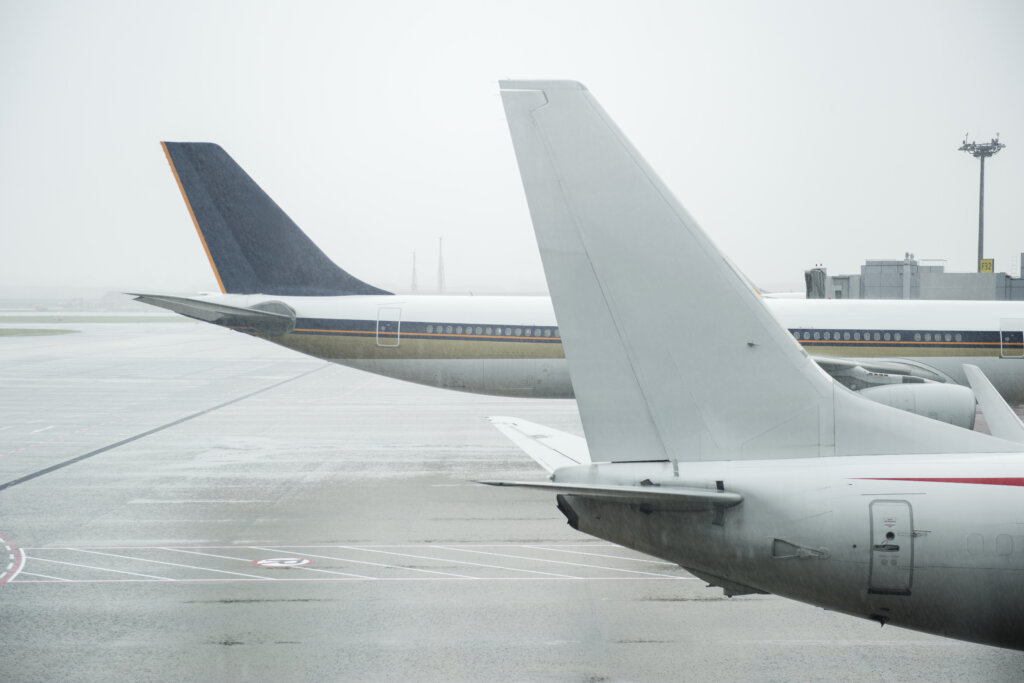
Alaska Airlines faced a significant setback as a fuselage blowout on a Boeing 737 MAX 9 flight departing from Portland led to the grounding of most MAX 9 models nationally.
This incident has triggered a chain reaction, affecting flights in Alaska and causing disruptions in major airports across the United States.
Impact on Alaska Flights
Alaska Airlines, utilizing the MAX 9s primarily for routes connecting Seattle with Anchorage and Fairbanks, and flights between Anchorage and Hawaii, saw the cancellation of several flights.
Scott McMurren, a transportation and hospitality consultant, highlighted that this grounding could have a ripple effect on Alaska Airlines’ operations, impacting the state’s travel landscape.
Five flights to and from Ted Stevens Anchorage International Airport were canceled, with seven others delayed. In Fairbanks, one flight was canceled, and four faced delays.
McMurren emphasized the potential for these numbers to change throughout the day.
Although Alaska Airlines has a substantial fleet of 65 MAX 9s nationally, McMurren noted that older jet models like the Boeing 737-700 or 737-800 are more commonly used in Alaska.
Still, removing even a few MAX 9s can disrupt operations, causing delays and cancellations.
United Airlines Inspection Findings
With a smaller presence in Alaska, United Airlines also operates MAX 9s.
Preliminary inspections revealed “installation issues” on door plug panels, requiring corrective measures. Door plugs, used in place of midcabin emergency exits, are shared features with Alaska Airlines’ MAX 9s.
United Airlines assured that their Tech Ops team would remedy the issues and safely return the aircraft to service.
These findings have contributed to the overall national disruption, with Sea-Tac Airport witnessing over 160 cancellations or delays on Monday.
National Disruptions and Cancellations
The fallout from the Alaska Airlines incident extended nationally, affecting several carriers.
The Seattle-Tacoma International Airport, one of the nation’s busiest, experienced significant delays and cancellations, totaling over 160 flights.
This situation has created a challenging environment for air travelers, especially those connecting through Seattle.
In response to the incident, Alaska Airlines announced the grounding of its MAX 9 fleet for inspection. The company expressed regret for the disruption and anticipated the effects lasting at least mid-week, impacting numerous passengers and flight schedules.
Connection to ESTA
In light of these disruptions, it is crucial for travelers to be aware of programs facilitating seamless travel experiences, such as the Electronic System for Travel Authorization (ESTA).
ESTA is an automated system that assesses the eligibility of visitors traveling to the United States under the Visa Waiver Program (VWP), providing a streamlined and efficient process.
As travelers navigate potential delays and cancellations, having a valid ESTA becomes particularly relevant and helpful.
ESTA allows citizens from VWP countries to travel to the U.S. for tourism or business without obtaining a visa. The program ensures streamlined entry processes, making it an ideal option for those seeking efficient travel arrangements during unforeseen circumstances like flight disruptions.
Whether planning a visit to Alaska or any other U.S. destination, understanding the advantages of ESTA in the context of national travel disruptions becomes increasingly valuable.
As the aviation industry addresses challenges posed by incidents like the MAX 9 grounding, programs like ESTA play a crucial role in maintaining the accessibility and attractiveness of the United States for global travelers.

